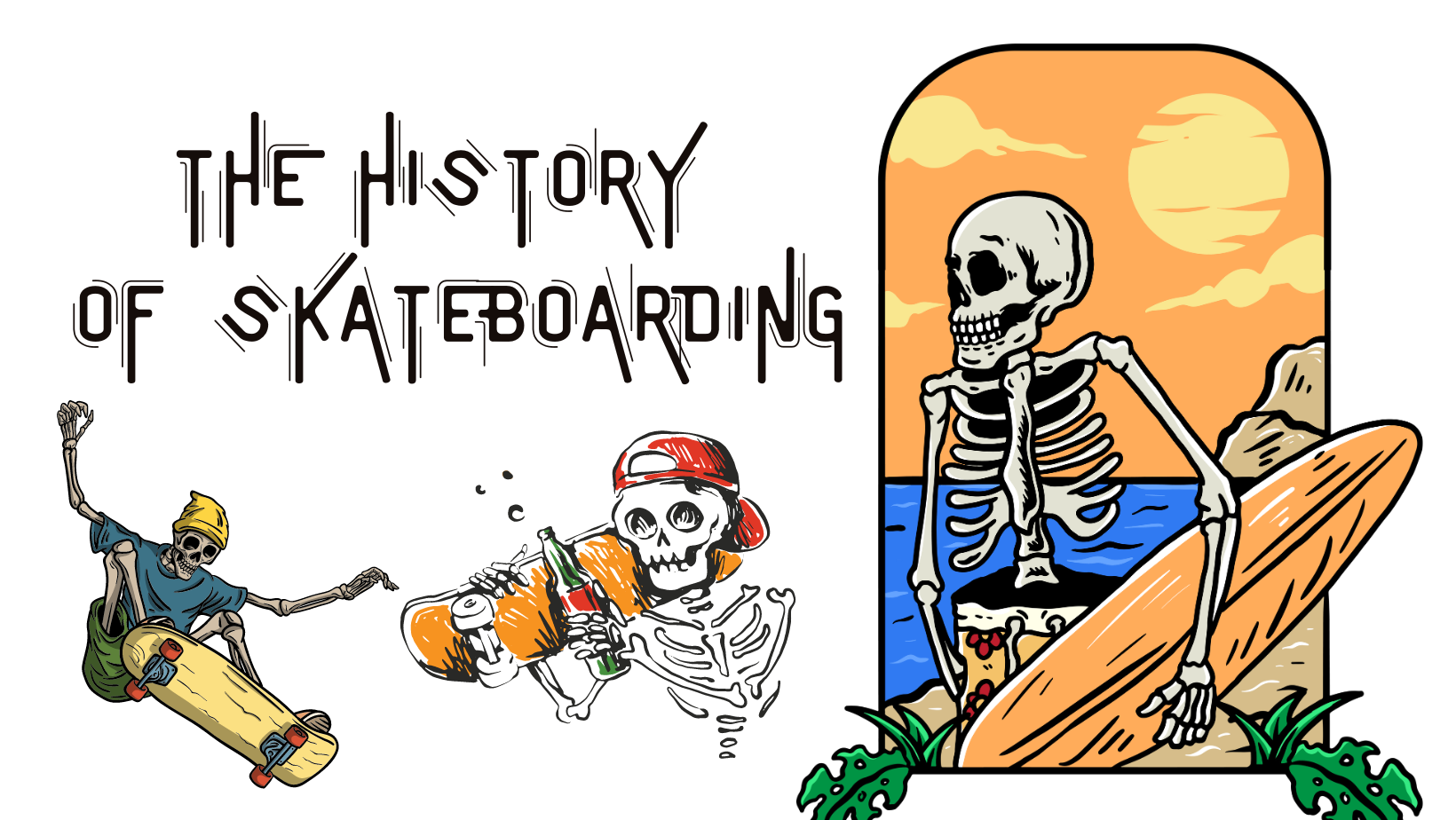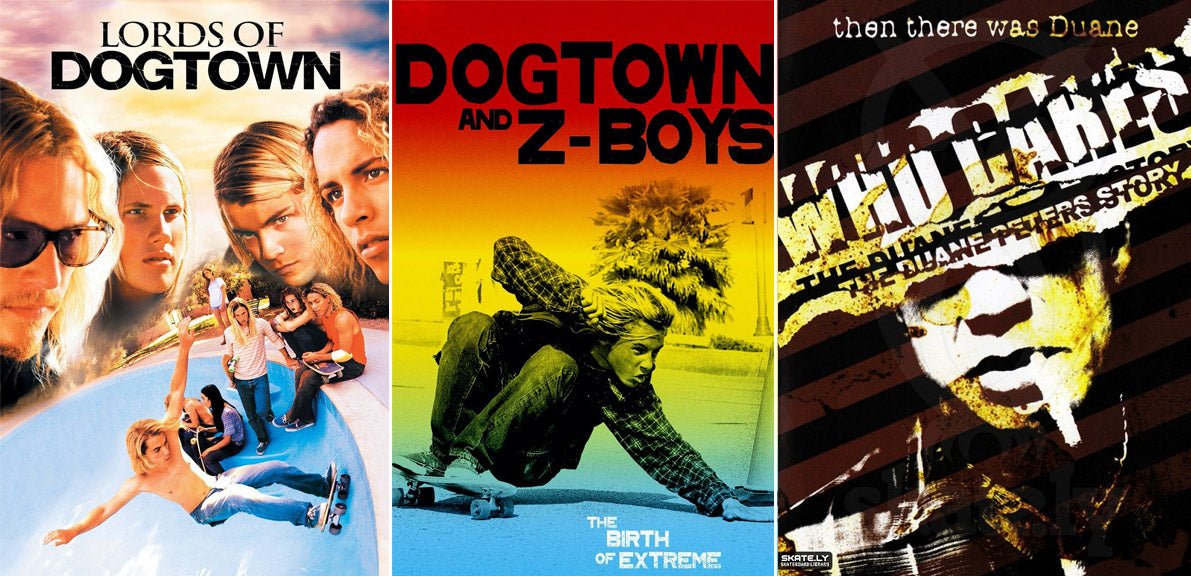The History of Skateboarding: How the Sport Evolved Over the Years

Skateboarding has come a long way since its humble beginnings in the 1950s. From a simple contraption created by kids in the United States to "sidewalk surf" when the waves were small, to becoming an Olympic sport, skateboarding has captured the hearts of millions around the world. In this article, we will explore the fascinating history of skateboarding, highlighting its evolution decade by decade.

1950s - The Birth of Skateboarding
In the 1950s, as surfing gained popularity, a few innovative individuals decided to take the wheels off their roller skates and attach them to a long and sturdy board. This ingenious idea allowed them to experience the feeling of riding a wave even when there were no swells to be found. The concept of "sidewalk surfing" or "asphalt surf" quickly caught on, and the skateboard was born. It spread like wildfire throughout the United States, becoming a favorite pastime for many.
1960s - The Influence of Surfing
During the 1960s, skateboarding became deeply intertwined with the world of surfing. Surf companies recognized the potential of this emerging sport and started manufacturing high-quality skateboards with clay wheels and trucks, primarily in California. The first mass-produced skateboard, called Roller Derby, hit the market and gained popularity among teenagers. Skateboarding had created its own identity with unique maneuvers and style, leading to its definitive name in 1963: Skateboard.
A significant development during this era was the birth of vertical skateboarding. When a severe drought emptied many swimming pools in California, surfers and skaters discovered they could have fun riding the walls, mimicking the transitions of ocean waves. This new style of skateboarding added a whole new dimension to the sport.
1970s - Equipment Evolution and Skate Parks
The 1970s brought critical advancements in skateboarding equipment and components. One game-changing invention was the introduction of urethane wheels. Unlike the previous iron and bakelite wheels, which were slippery and made maneuvers challenging, urethane wheels provided better traction and control, revolutionizing the sport.
Another significant innovation of the 1970s was the invention of the kicktail. This addition to the skateboard allowed skaters to improve their balance and execute more complex tricks and maneuvers.
The 1970s witnessed several notable skateboarding milestones. In 1977, Jeff Tatum performed the first air, known as the Frontside Air. The following year, Allan Gelfand invented the ollie, specifically the Frontside Ollie, which marked the birth of street skateboarding. In 1979, Duane Peters pulled off the first full 360-degree rotation in a loop, showcasing the incredible progression of the sport.
However, despite its growing popularity, skateboarding faced significant challenges in the late 1970s becoming associated with a rebellious counter-culture, solidifying its unique identity.
1980s - Do-It-Yourself Culture and Technological Advances
The 1980s witnessed a skateboarding explosion characterized by a do-it-yourself culture. Skateboarders took matters into their own hands, constructing wooden ramps in streets, squares, and backyards. This self-made approach fueled a rapid evolution of skateboarding equipment and technology during this decade.
Skateboarding movies and specialized magazines gained immense popularity in the 1980s, playing a crucial role in shaping the sport's image. The release of The Bones Brigade Video Show in 1984, featuring legendary skaters like Tony Hawk, Steve Caballero, Lance Mountain, and Rodney Mullen, revolutionized the skateboarding market. Skateboarding also made its mark in mainstream cinema, with films like "Back to the Future" in 1985, "Thrashin" in 1986, and "Gleaming the Cube" in 1989, further fueling its popularity.
1990s - Skateboarding Goes Mainstream
The 1990s were a turning point for skateboarding as it began to transition into the mainstream. The broadcasting of skateboarding competitions on ESPN, starting with the X Games, helped clean up the sport's rebellious image. Skateboarding started gaining wider acceptance and popularity once again.
In 1999, the video game "Tony Hawk's Pro Skater" was released, becoming a global sensation. This game, available on various gaming platforms, introduced skateboarding to a whole new generation, further cementing its position in popular culture.

2000s - Skateboarding Enters the Spotlight
The 2000s marked the decade when skateboarding events became widely popular on mainstream TV. Major competitions like the X Games, Dew Tour, Gravity Games, Tony Hawk Gigantesc Tour, and the Maloof Money Cup were broadcasted live by leading television networks worldwide, with significant prize money up for grabs.

Skateboarding once again gained attention in films and documentaries like "Z-boys and Dogtown," "Who Cares: The Duane Peters Story," and "Lords of Dogtown." In 2004, the International Skateboarding Federation (ISF) was founded, and the Go Skateboarding Day was established, providing a platform to celebrate the sport worldwide.
2010s & Beyond - Skateboarding Solidified
The 2010s were a defining decade for skateboarding, as it solidified its position and gained mainstream acceptance. The sport received increased coverage on TV, with championships and advertisements reaching a wider audience. Governments responded to the demands of skateboarders by building dedicated skate parks and implementing policies to support the sport.
Skateboarding also witnessed a surge in popularity as a sustainable mode of transportation. With concerns about climate change and environmental issues, many individuals turned to electric skateboards as an energy-efficient alternative for commuting.
During this decade, professional street skater Rob Dyrdek introduced the Street League Skateboarding, an invitation-only competition with substantial prize money and live broadcasts on TV and the internet. In 2016, skateboarding achieved a significant milestone by becoming an Olympic sport, further propelling its popularity and solidifying its place in sports history.
The Future of Skateboarding: Embracing Technology
The future of skateboarding looks promising, with technology playing a significant role. Electric skateboards have emerged as a high-tech addition to the skateboarding world, attracting a new demographic of riders. Electric skateboards provide a fun and eco-friendly means of transportation, appealing not only to teenagers but also to young professionals seeking an efficient way to commute.
The industry now offers a wide range of electric skateboards, including off-road models, street skateboards, bamboo boards, and carbon boards. Brands like Evolve have introduced various series, such as the Evolve Hadean Series, Evolve GTR Series, and Evolve Stoke, catering to different riding preferences.
As the skateboarding industry continues to evolve, there is no doubt that it will retain its allure for those seeking adventure, creativity, and the thrill of riding on four wheels and a board. Whether it's traditional skateboarding or the electric-powered variety, skateboarding will always have a special place in the hearts of enthusiasts worldwide.
FAQ
Who invented the skateboard?
The exact person credited with inventing the skateboard is difficult to determine as it was a result of various individuals' contributions and ideas. However, in the 1950s, a few kids in the United States attached the wheels from roller skates onto a long and thick board, which can be considered the birth of the skateboard as we know it today.
Who invented the kicktail?
The invention of the kicktail, an essential feature of modern skateboards, is attributed to Larry Stevenson, who is also the founder of Makaha Skateboards, introduced the kicktail in the 1960s. The kicktail is an upturned portion at the back end of the skateboard deck that allows skaters to perform tricks and maneuvers, providing better balance and control.
What was the first skateboard in the history?
The first commercially available skateboard in the history of the world is believed to be the Roller Derby skateboard. Manufactured by the Roller Derby Skate Company, it was the first mass-produced skateboard and hit the market in the 1960s. The Roller Derby skateboard played a crucial role in popularizing the sport and making skateboarding more accessible to the public.


